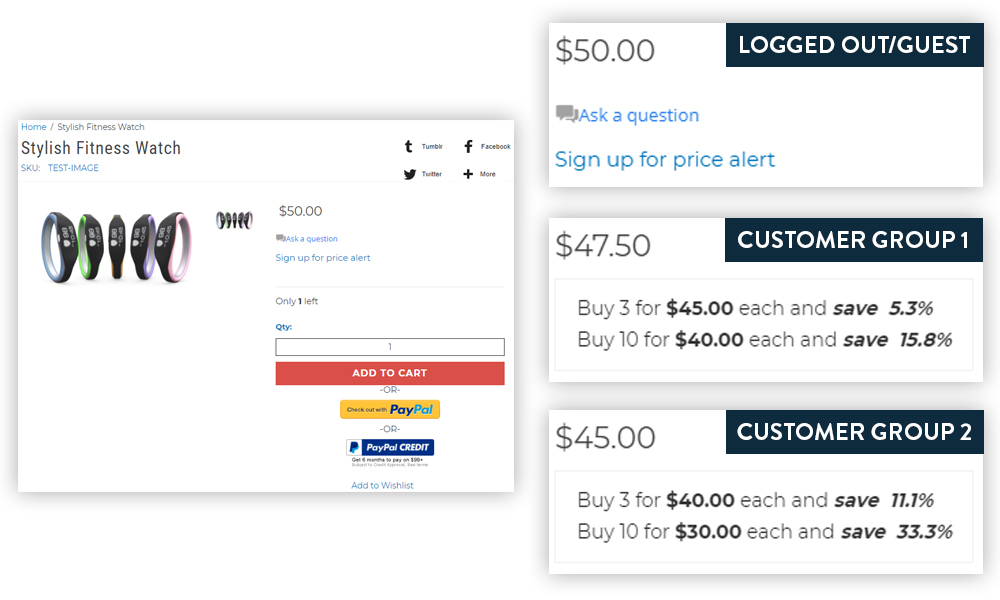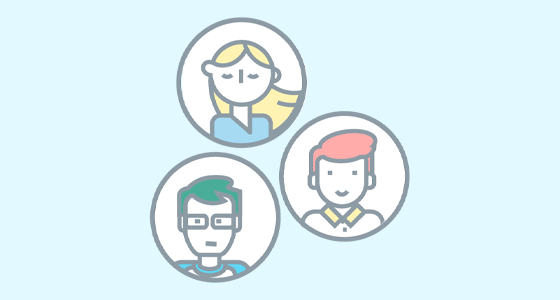An important aspect of many Ecommerce businesses, but particularly B2B Ecommerce, is the leveraging of customer segmentation. By being able to group your customers in effective ways, you can make your Ecommerce initiatives more successful.
In this piece, we’ll cover what customer segmentation is, the role it has in Ecommerce marketing, types of segmentation strategies and how to segment customers. We’ll then look at some of Zoey’s capabilities for segmentation and how you can leverage them to accomplish these customer groups.
What is Customer Segmentation?
Customer segmentation is the dividing of your customer lists into smaller groups with similar traits and/or characteristics. By doing so, you can offer a more focused, personalized Ecommerce approach, set of marketing and more.
Your buyers have a diverse array of requirements, business sizes and goals. What they buy and how much will likely vary just as widely. Segmentation can ensure you’re putting the best messages and offers in front of the right buyers.
Customer Segmentation in Ecommerce Marketing
For your marketing initiatives, segmenting your customers will help you present the right message to the right group. This can take a number of directions.
For instance, if you have buyers who traditionally buy by the case, and there’s 12 cases to a pallet, a marketing promotion around buying multiple pallets may miss the mark. Conversely, a customer who buys by the pallet may be more engaged with that message.
Ecommerce can be segmented in a lot of different places:
- Email Marketing: Your list can be separated, and different variations of emails can go out to different customer segments.
- Direct Mail Marketing: You may only send pieces to customers who spend a certain amount of money (which can help justify a physical mailing investment), or those who routinely still use a catalog or other means to buy, since they’re more reliant on those pieces.
- Search Marketing: You can segment geographically, age group, gender and other factors to hone in on your various marketing personas.
Ways to Manage Ecommerce Segmentation
So how can you segment your customers successfully? Here are ways you can group your customers, and remember you can use more than one category to further group buyers into tighter segments:
- Industry: Some B2B businesses sell catalogs that service more than one industry. You can organize your buyers in a way that lets you surface the best catalog suggestions for each industry.
- Order size/annual volume: Pricing is one of the biggest ways B2B Ecommerce businesses segment their buyers. One of the biggest reasons pricing differs is based on a buyer’s order volume, or order size.
- Business size: You may work with businesses large and small, and the messaging/marketing will likely differ depending on who you’re targeting.
- Geography: Sometimes marketing may have something to do with geographic considerations. In a country like the United States, weather can be a factor as to when buyers buy certain products, for instance. Or it could indicate whether the market in that area will even be interested in a product. Items designed for city life may not sell well in rural areas, and vice versa.
- Product exclusivity: You may have distribution deals or specific territories for specific products, and that may mean only certain buyers can access them. Segmentation makes it easier to surface the right products to the right buyers.
- Payment types/lines of credit: Some buyers may get access to certain payment options because they’ve established a payment history, while others may need to pay upfront or with tighter Net Terms because they’re still new to the business.
Using Customer Groups for Ecommerce Segmentation
Now that you know various ways to segment customers, here’s some examples of how Zoey’s Customer Groups functionality can allow you to set up differentiation across various customer segments.
Pricing by Customer Group Options
One of the more obvious ways that a merchant can segment customers is offering different pricing to different customer groups. A customer can log in, see their specific pricing, and place orders based on the pricing arrangement they have in place. However, pricing can get much more complex than just having a different baseline price. Here’s examples of other ways you can differentiate pricing
- Tier Pricing by Customer Group: You can set different tier levels for each of your customer groups to encourage volume sales. For example, if retail customers get a discount by the case, and wholesale customers buying by the case get a discount for buying a whole pallet, you can have different rules for each.

Show pricing that differs by Customer Group, with different tier pricing breaks for each. - Promotions and Discounts: Set up different rules for each of your customer segments, or limit coupons to certain customer types. So if retail customers get a discount based on certain order levels, but wholesale does not, you can configure your promotions to target an individual group.
- Pricing Per Customer: You can even set up a group for each individual customer, for the absolute in customization – unique pricing for each of your customers.
Catalog Segmentation
Similar to pricing, you may want to present your catalog differently depending on the group. Perhaps some wholesale products aren’t available for retail. In other cases, you may only allow certain customers to have access to certain products. Or you may sell in different industries where each customer only is engaged around a specific segment of your catalog. Customer Groups can be paired with our Access Restrictions feature to completely customize the catalog for each group, including product and category visibility.
Content by Customer Group
Our CMS capabilities allow for content pages (Return Policies are a great example of something that may differ by customer type) to be segmented, including which ones are shown in the navigation menu for each customer type. You can also redirect each group to a different landing page upon login, effectively allowing for a different homepage for each group.
In certain cases, like our newly launched Advanced Quick Order Forms, you also have the ability to segment a block’s visibility by group, even if the rest of the page is open to everyone.
Shipping and Payments Options
For both our shipping and payments aspect of checkout, you have the ability to define which options are available for each group. In certain cases you have the ability to set more granular controls for shipping types:
- Free Shipping: Define what amount needs to be spent by each group to achieve Free Shipping.
- Flat Rate Shipping: Set different levels for each customer group type
Given different customer types may also have different needs, aligning your shipping and payment options to cover those customers will lead to more productive sales results within your customer base.
Get Creative
While the above options are straightforward implementations of our Customer Groups features, some of our customers have taken the idea and spun them in more unique directions. Here’s some examples of ways Customer Groups can be leveraged to drive sales:
- Segment Customers by Frequency of Order: Marketing teams can leverage customers grouped this way to target more generous promotions where it’s needed the most. Are you trying to get your irregular customers to buy more? Maybe you want to lavish your best customers with better deals! You can leverage groups to organize your customers, and then use your Email Service Provider to send out targeted emails.
- Group Customers Geographically: Geographic grouping can help you better target customers in different areas with messaging that may better resonate, especially when grouped with our content Access Restrictions and Customer Groups features, as well as Zoey’s built-in internationalization capabilities.
- Retail vs. Wholesale: Many Zoey customers have public pricing that is their retail price, while wholesalers can register and login to see their wholesale pricing. Effectively, merchants can run both their B2C and B2B arms off of one website. This is a huge efficiency opportunity for merchants maintaining two stores, one for each side of the business.
Zoey Customer Groups Demo
Here’s a video demo of Zoey’s core Customer Groups features:
Customer Segmentation in B2B Ecommerce Software
B2B Ecommerce software will tend to have some sort of segmenting capability, but whether they can do the deeper, more complex and helpful groupings that modern B2B Ecommerce requires can be a mystery. Zoey has taken a very in-depth approach in its design of segmentation to allow you to segment by catalog, pricing, billing and shipping options, and even the design you present buyers.
If you’re looking to acquire B2B Ecommerce software that can help you successfully manager customer groups, connect with us and we can give you a demo of Zoey, while learning more about how our software can help you succeed:





